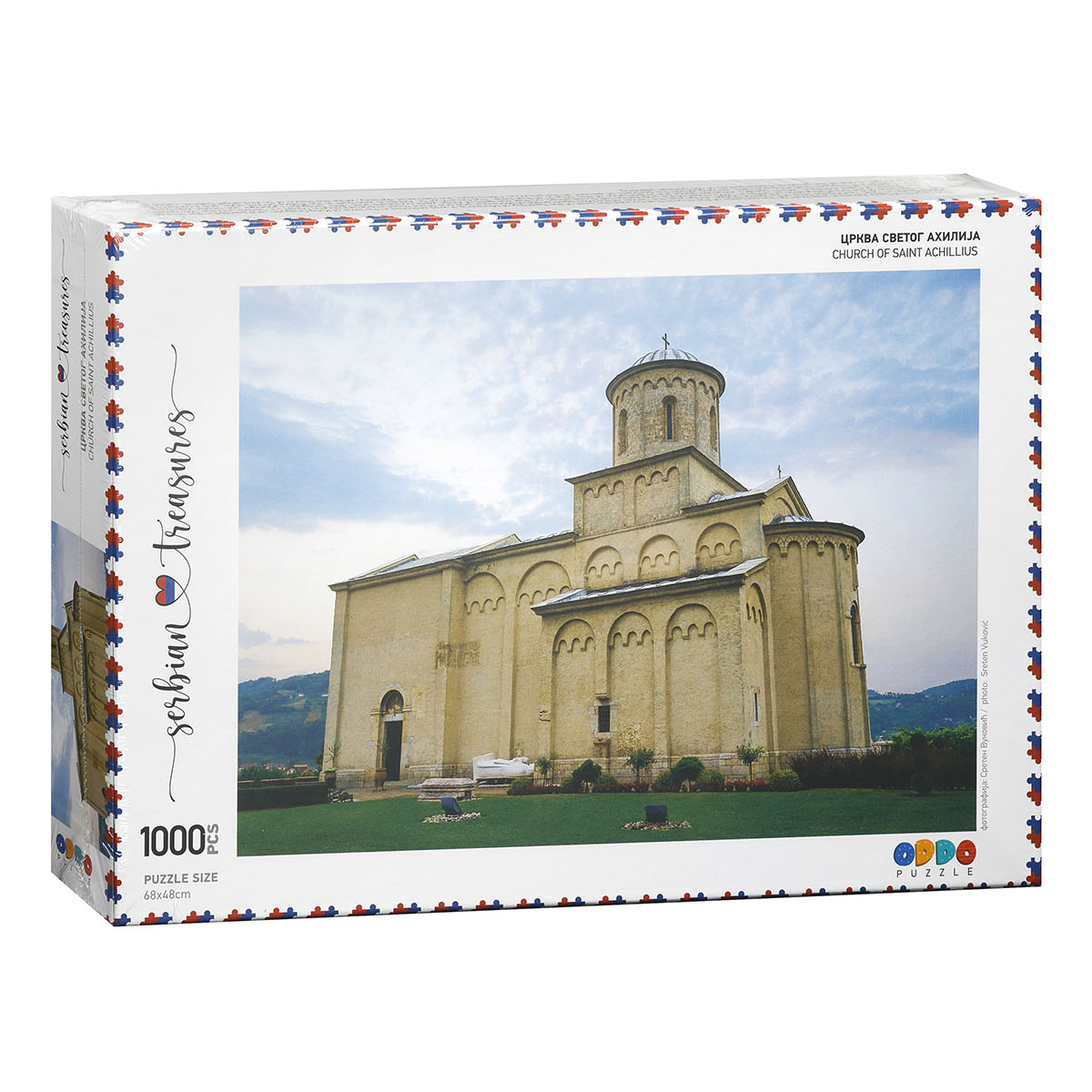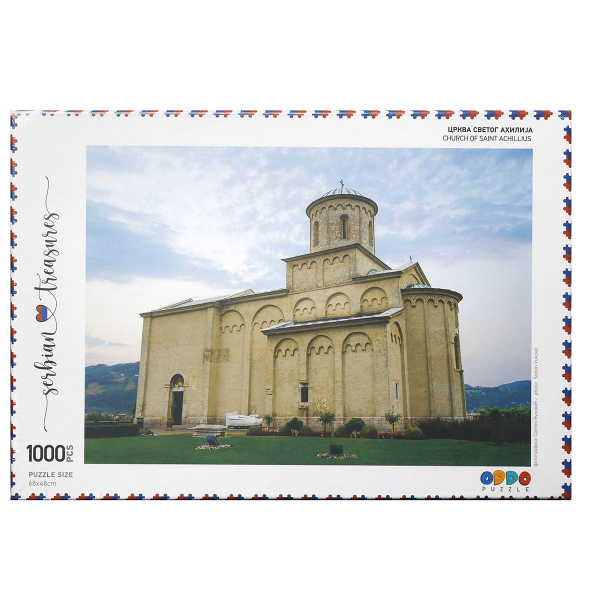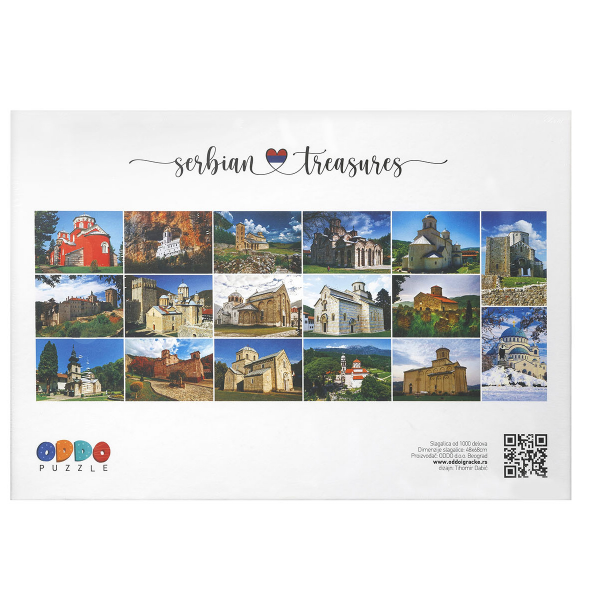Crkva Svetog Ahilija u Arilju Puzzles Serbian Treasures Collection 960414
1.980 RSD
Brend: ODDO PUZZLES
Šifra: 00DD960414
Ean: 9788660960414
Motiv: Gradovi i građevine
Format: Standardni
Broj delova: 1000
Dimenzije: 68 x 48cm
Proizvođač: ODDO PUZZLES
Zemlja proizvodnje: Turska
Uvoznik: ODDO d.o.o
Црква
Светог Ахилија је настала на остацима цркве у којој је било седиште Моравичке
епархије. Обновљена је у време краља Драгутина, а живописана у време краља
Милутина 1296. године. У време цара Душана у Ариљу је средиште Моравичке
митрополије, а Ариље је све до 16.века било један од најважнијих црквених
центара у Србији. У време Велике сеобе Срба 1690.године, највећи део
становништва напушта ове крајеве, да би се ариљска звона огласила тек 1833.година.
У Цркви Светог Ахилија је сахрањен Драгутинов млађи син Урошиц, што довољно
говори о тадашњем значају ове цркве. Црква Светог Ахилија је саграђена у рашком
стилу, у њој се на фрескама налази највећа галерија портрета, скоро сви
дотадашњи владари из лозе Немањића, а фреска Светог Архангела Гаврила, названа
„Плави анђео“ спада у највећа ремек дела старог српског сликарства.
The Church of Saint Achillius was built on the
remains of the church that housed the seat of the Eparchy of Moravica. It was
restored in the time of King Dragutin, and painted in the time of King Milutin
in 1296. During the time of Emperor Dušan, Arilje was the center of the Metropolitanate
of Moravica, and one of the most important church centers in Serbia until the
16th century. At the time of the Great Migration of Serbs in 1690, most of the
population left these areas, so that the bells of Arilje were not heard until
1833. Dragutin’s younger son Urošić was buried in the church of Saint Achillius,
which speaks volumes about the importance of this church at that time. The
Church of St. Achillius was built in the Raška School style, and it contains the largest
gallery of frescoes featuring portraits, among which the portraits of almost
all the previous rulers from the Nemanjić dynasty, while the fresco of St.
Archangel Gabriel, called The Blue Angel,
is one of the greatest masterpieces of old Serbian painting.






